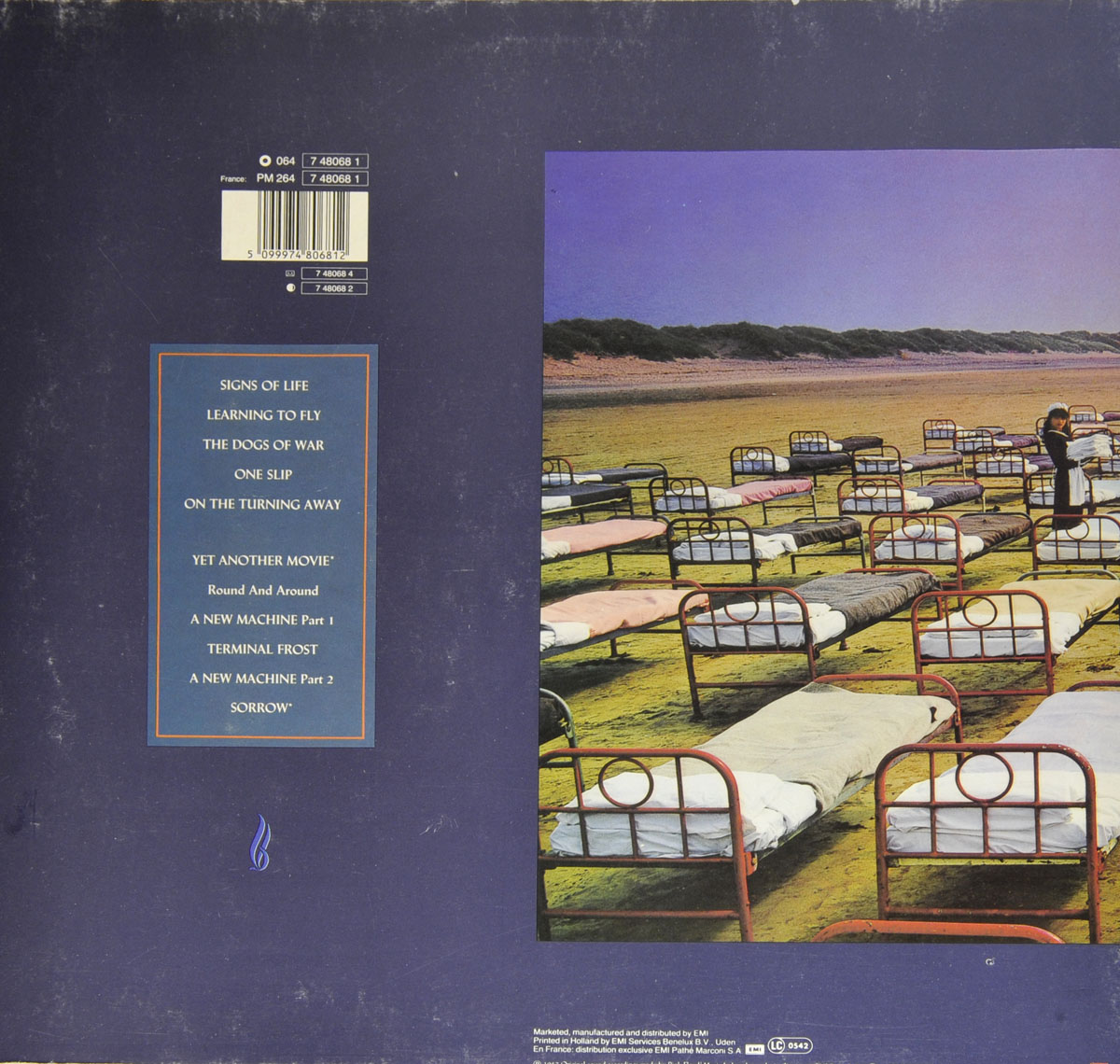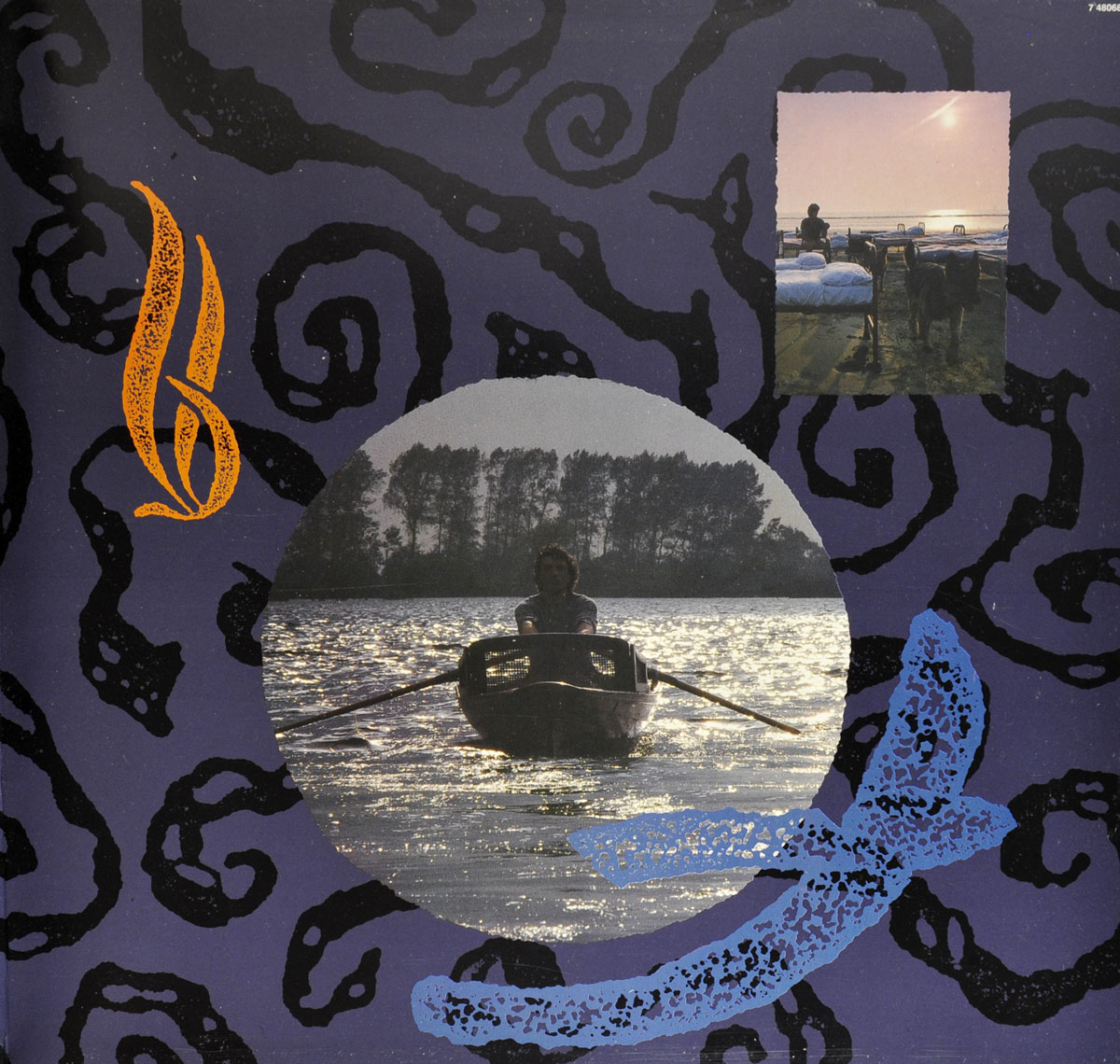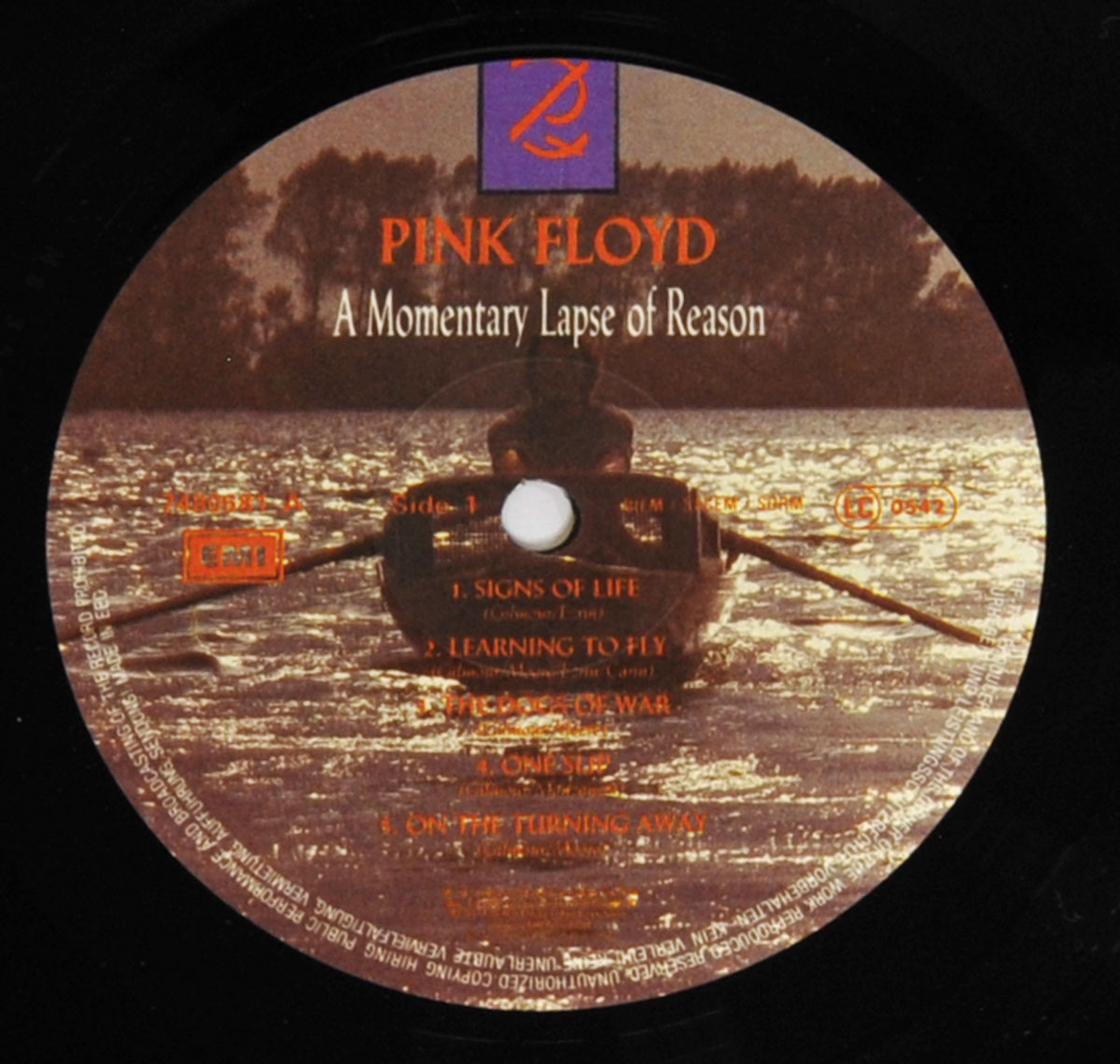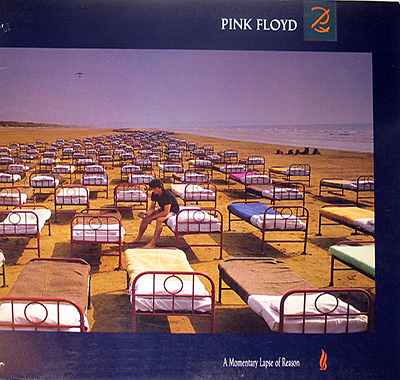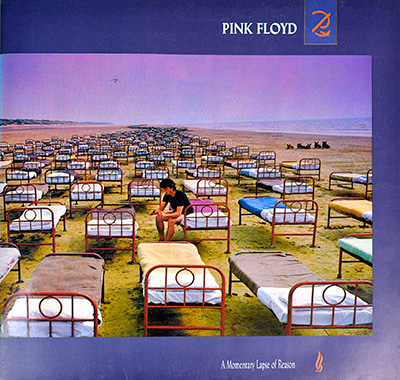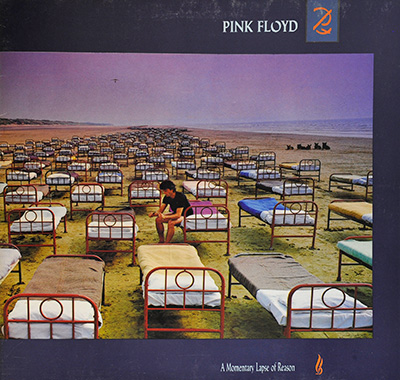Pink Floyd’s “A Momentary Lapse of Reason” — France, 1987 Album Description:
In the late summer of 1987, when FM radio loved a widescreen chorus and the CD was learning to shimmer, Pink Floyd returned with a record that sounded like night water and neon. The French release of “A Momentary Lapse of Reason” (EMI 748068) arrived as a confident statement: the band would continue, and it would do so with modern tools, sharp edges, and songs built to travel stadium distances.
Historical Weather: After the Storm
The album surfaces in the wake of an internal squall. Roger Waters had departed; the name “Pink Floyd” itself became the center of a legal tug-of-war. Inside that pressure system, guitarist-singer David Gilmour stepped to the front of the stage lights, drummer Nick Mason set about rebuilding the engine room, and keyboardist Richard Wright—once a founding architect—worked under contractual constraint, contributing with a quieter, necessary gravity. The result isn’t a requiem; it’s a relaunch.
Studios on the Water and in the City
Production began on Gilmour’s houseboat studio, the Astoria, moored on the Thames—a location that lent the record its aqueous glide and nocturnal reflections. Sessions expanded to London rooms like Mayfair and Audio International, and across the Atlantic to major American studios, where the sound could be machined to radio brightness without losing its twilight mood. You can hear the river and the console both: drift and definition, in equal measure.
The Production Handshake
Gilmour co-produced with Bob Ezrin, whose taste for cinematic scale is well documented. Together they built a record that breathes like a film: scene-setting instrumentals, muscular singles, recurring motifs, and an ear for drama—choirs that lift, drums that land like runway lights. Engineer Andy Jackson’s detail work gives the music a crisp surface tension; the mix feels modern for 1987 and still curiously weightless.
Musical Exploration: Steel, Glass, and Vapor
The palette is wide. Gilmour’s guitar—in clean arcs, slide sighs, and granite solos—cuts through arrangements laced with digital keys and sampled ambience. “Learning to Fly” is flight-plan pop, a steady climb with thermals of synth beneath. “The Dogs of War” stalks with baritone menace, brass flickers catching the eye like streetlamps in rain. “On the Turning Away” opens like a candle and becomes a beacon. Instrumentals such as “Terminal Frost” and the “A New Machine” fragments act as waypoints: metal ribs and vapor, connecting radio songs to a larger map. The rhythm section—often propelled by session heavyweights like Tony Levin, Jim Keltner, and Carmine Appice—gives the album its forward press, while guest saxophonist Tom Scott threads a late-night line through the fog.
Band Events: Continuity by Design
Wright’s return—restricted though it was—matters. His harmonic touch adds the familiar Floydian chiaroscuro, the sense that chords can hold weather. Mason’s presence, whether thunderous or textural, keeps time with the group’s own heartbeat. Around them, programmers and arrangers—Jon Carin, Patrick Leonard, and others—helped translate Pink Floyd’s language into the late-’80s dialect of gated rooms and glossy air.
Controversies in the Glow
The legal dispute with Waters over authorship and the name cast a long shadow during production and release. Critics argued over how “Pink Floyd” the album truly was, pointing to session rosters and the sleek studio armature. But controversy here functions like a counter-melody; the primary line is in the music’s resolve. The record doesn’t imitate the past—it triangulates between atmosphere, songcraft, and scale, choosing propulsion over nostalgia.
France, 1987: A Landing Zone
Issued in France on EMI, the album met a listening culture that prized both art-rock pedigree and radio clarity. The French edition carried the same tidal artwork and the same promise: this is Pink Floyd in motion again, headlights cutting across open highway, river surface broken by the wake of a returning vessel. Play it at volume and the rooms get larger.
Credits, in Brief
Produced by David Gilmour and Bob Ezrin. Core contributions from Gilmour, Mason, and Wright, with significant roles for Tony Levin, Jim Keltner, Carmine Appice, Jon Carin, Patrick Leonard, and Tom Scott. Recorded at the Astoria and major London/Los Angeles studios; engineered with meticulous attention to space and sheen. Release: September 1987 (France: EMI 748068).

